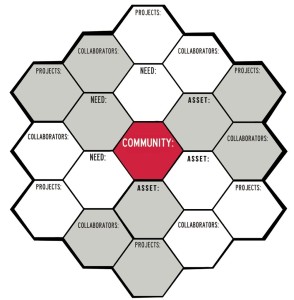Museums have to look at where they can challenge the status quo, and where they can push,
but also where they can partner. Peoria, IL City Manager
Every once in awhile a confluence of books, articles, conference presentations, and blog posts calls attention to the same phenomenon in the museum world. Is this synchronicity, the zeitgeist, a meme? Clearly social media makes this kind of thing more likely. Right now I’m noticing a growing recognition of museums’ role as civic institutions irrespective of collection or disciplinary focus. From this perspective, collections and focus can shape and color a museum’s role in its community, but should not be used as a reason for non-involvement.
For those of us collaborating on The Empathetic Museum project–Janeen Bryant, Jim Cullen, Elissa Frankle, Matt Kirchman, Stacey Mann, and Rainey Tisdale–this focus on museums as part of the civic infrastructure is an affirmation of much of our work so far. In fact, on our list of the Characteristics of The Empathetic Museum, Civic Vision comes first:
Civic Vision: the imagination to see the institution as a part of and not apart from the larger community, a player with status and responsibilities in the civic arena.
Why is civic vision so important? Unless our leaders–museum associations as well as boards and directors of individual museums–really believe and behave as if they have a legitimate role and responsibility, along with other civic institutions, for the well-being of society, museums will never have the relevance they say they want.
If you are interested in following this line of thinking, here are some other current sources:
- ” Museums are beginning to understand themselves as networked civil society institutions with soft power that can enhance the importance of cities and empower their residents and visitors.” Lord and Blankenberg, 2015. Cities, Museums, and Soft Power.
- The quotation at the top of this post comes from an interview, conducted by Museum Questions blogger Rebecca Herz, with the City Manager of her town. Rebecca, Director of the Peoria PlayHouse Children’s Museum, has recently been exploring the issue of museums, soft power, and civic responsibility in thoughtful posts. See also her interview with Soft Power author Ngaire Blankenberg.
- “Are We Failing?” Maria Vlachou, Cultural Management and Communications and Executive Director of Accesso Cultura in Lisbon, posed this question at the annual conference of the Network of European Museum Organiations in early November, discussing museums’ roles (mostly silence) in relation to the economic turmoil and social upheaval in Europe today. (I began writing this post before the November 13 terrorist attacks in Paris; it remains to be seen what kinds of challenges await museums in their wake.)
- See Nina Simon’s current postings on Relevance, including this one on Community-Centered Program Design.

Image created by Nina to illustrate the community-centered planning focus of her museum. Santa Cruz Museum of Art and History. 2015.
- Bloggers Linda Norris and Nicole Deufel also write extensively on this topic.
- And finally , my most recent presentation, at the INTERCOM conference on Museum Leadership in Washington, DC, examines Civic Vision as a key element, not only of best practice, but of “next practice.”
If you are receiving this by email please send comments to me on Twitter @gretchjenn or write a comment on www..museumcommons.com